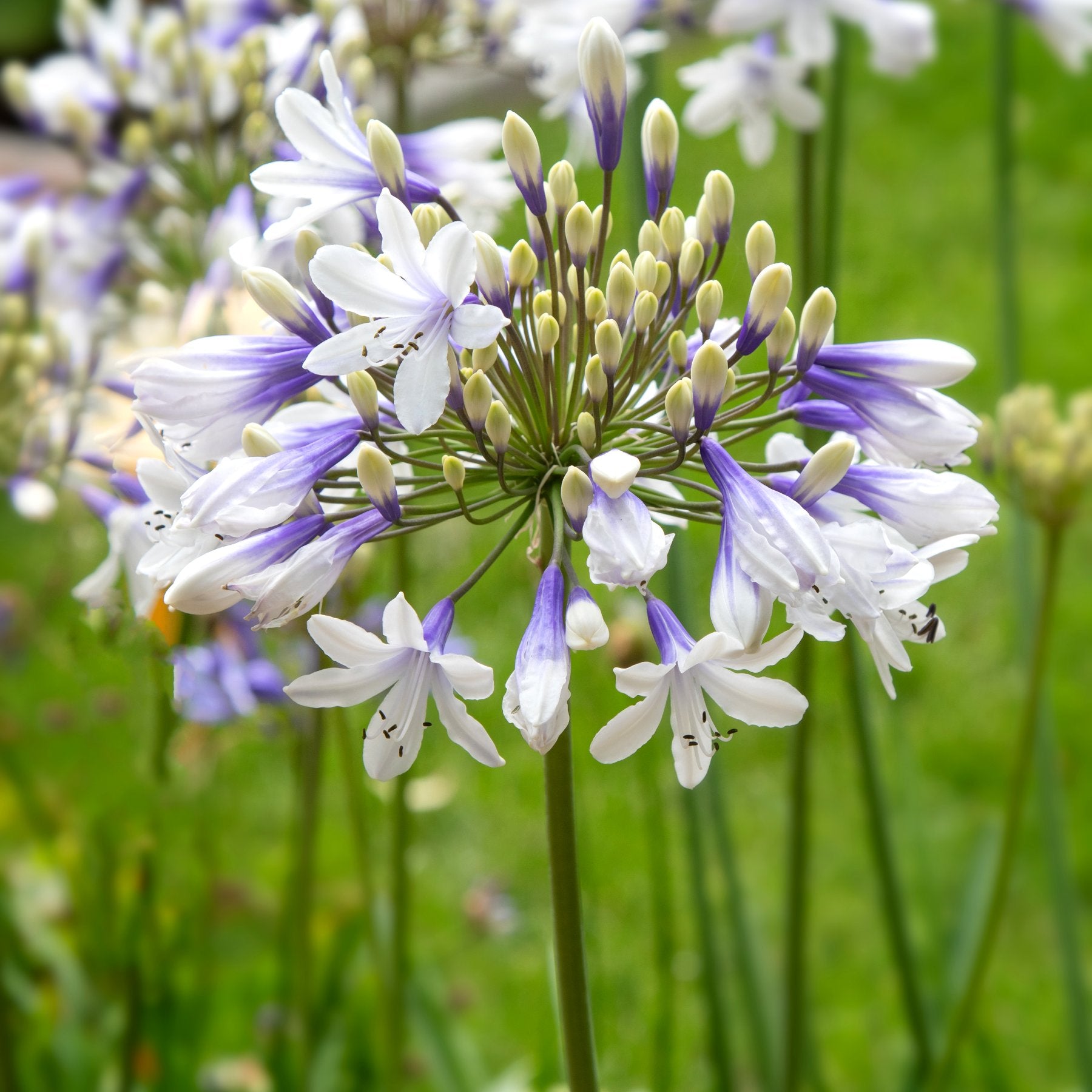Growing Agapanthus: A Total Guide to Beautiful Blooms
Wiki Article
Mastering the Art of Agapanthus Care: Essential Steps for Healthy And Balanced Growth and Vivid Blossoms
In the world of horticulture, the farming of agapanthus stands as a gratifying venture for those who seek to nurture these classy flowering plants. With their striking blooms and elegant foliage, agapanthus has recorded the interest of gardeners worldwide. Nonetheless, achieving optimal growth and dynamic blossoms calls for a nuanced method that incorporates various necessary actions. From picking the best range to mastering pruning strategies, the journey towards growing growing agapanthus plants is complex and holds the crucial to opening the complete potential of these agricultural treasures.
Selecting the Right Agapanthus Variety

When choosing the ideal Agapanthus range for your garden, think about factors such as climate suitability, blossom shade, and development habit. In addition, take into consideration the climate in your area to make sure the Agapanthus variety you select can thrive in your details conditions. Recognizing the growth practice of various Agapanthus selections is critical for correct positioning within your yard.
Ideal Planting Conditions
Thinking about the ideal ecological demands is essential for effective Agapanthus cultivation. Agapanthus plants are delicate to cold temperature levels and ought to be safeguarded from frost during winter months.To guarantee healthy development and dynamic blossoms, plant Agapanthus light bulbs at a deepness of regarding 2-4 inches and room them 8-12 inches apart. Mulching around the base of the plants aids preserve moisture and subdues weed development.
Watering and Fertilizing Tips
Maintaining appropriate moisture levels and providing essential nutrients are key elements in the treatment routine for Agapanthus plants. When it comes to watering Agapanthus, it is crucial to strike a balance. These plants prefer regularly damp soil but are vulnerable to root rot if overwatered.Fertilizing Agapanthus is vital for promoting healthy growth and prolific blossoms. Apply a balanced fertilizer, such as a 10-10-10 formula, in the very early springtime as new development emerges. Repeat this application every 6-8 weeks throughout the expanding period. Stay clear of too much fertilization, as it can bring about lavish foliage at the expense of blossoms. Always follow the producer's directions for appropriate dilution and application approaches. By complying with these watering and feeding ideas, you can ensure your Agapanthus plants prosper and generate vibrant, long-lasting flowers.
Trimming Strategies for Agapanthus
Trimming Agapanthus plants at the suitable times and with correct strategies is essential for keeping their health and wellness and promoting optimal growth and blooming. The optimal time to trim Agapanthus is in late winter months or early spring before new development arises. Start by getting rid of any kind of dead or yellowing leaves near the base of the plant. Cut them as close to the ground as possible without harming the arising shoots.For flowered stems, wait until the blossoms have withered and afterwards cut them back to the base. This not only cleans up the plant's appearance however also encourages the development of new flower buds. Deadheading spent blossoms can likewise reroute the plant's power right into creating even more blossoms instead of establishing seeds. However, if you desire to gather seeds for breeding, leave article some flowers to dry and mature on the plant.
Remember to make use of clean, sharp devices to make accurate cuts and lower the threat of introducing diseases. Agapanthus. Regular trimming will certainly aid keep your Agapanthus looking cool and healthy and balanced while ensuring a plentiful display screen of stunning blooms
Managing Common Parasites and Illness
After making sure proper trimming strategies for Agapanthus, it is vital to attend to common insects and diseases that can affect the health and wellness and vigor of these plants. Agapanthus plants are usually durable yet can still succumb to particular problems. One usual insect that influences Agapanthus is the Agapanthus gall midget. This tiny, orange fly lays its eggs in the foliage, causing distorted growth and blossom buds that fall short to open up. To fight this bug, trim and ruin any type of damaged plant parts and think about using insecticidal soap.An additional typical concern is fungal fallen leave spot, which provides as dark sores on the fallen leaves. To stop fungal conditions, make certain great air flow around the plants, stay clear of overhead watering, and eliminate any kind of contaminated fallen leaves quickly. Additionally, Agapanthus plants can deal with root rot if they are grown in inadequately draining dirt. To avoid this, plant Agapanthus in well-draining dirt and avoid overwatering. By being cautious and taking timely activity against insects and diseases, you can help your Agapanthus plants flourish and produce lively blossoms.

Final Thought
In final thought, mastering the art of agapanthus treatment involves choosing the best range, offering perfect planting problems, appropriate watering and feeding, proper pruning techniques, and attending to typical parasites and illness. By adhering to these essential steps, you can guarantee healthy and balanced development and vibrant blossoms for your agapanthus plants. Keep in mind to frequently keep an eye on and maintain find out here now your plants to promote their overall health and long life.To ensure healthy growth and lively flowers, plant Agapanthus bulbs at a deepness of about 2-4 inches and space them 8-12 inches apart. By complying with these watering and feeding tips, you can guarantee your Agapanthus plants check this thrive and create vibrant, lasting blooms.
One common parasite that affects Agapanthus is the Agapanthus gall midge. Additionally, Agapanthus plants can endure from origin rot if they are grown in badly draining pipes dirt. By adhering to these vital actions, you can ensure healthy growth and vibrant blossoms for your agapanthus plants.
Report this wiki page